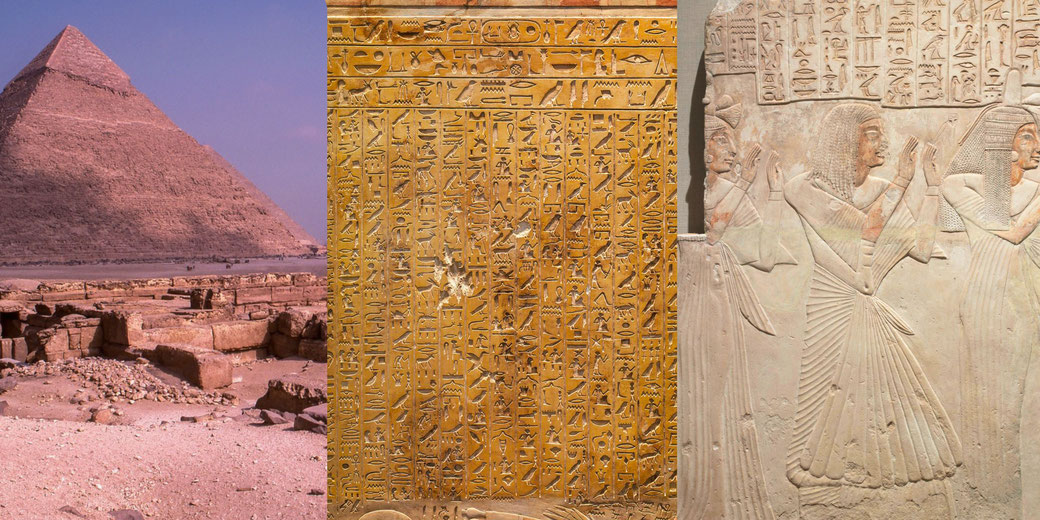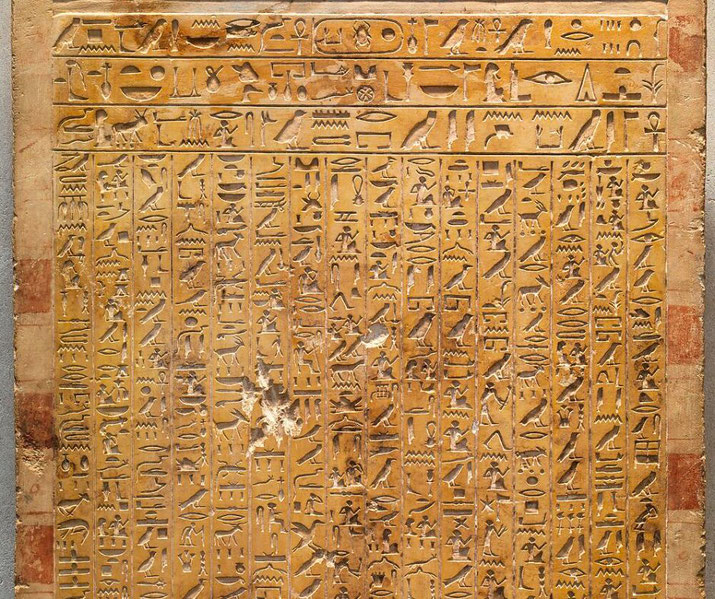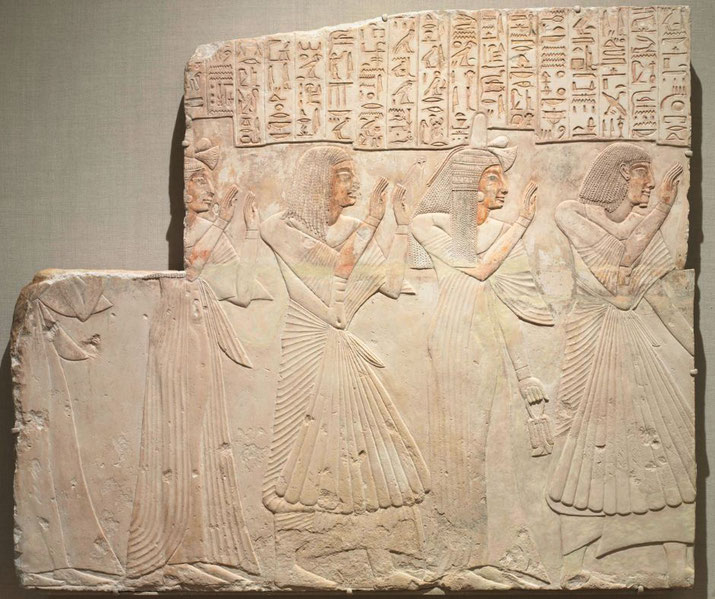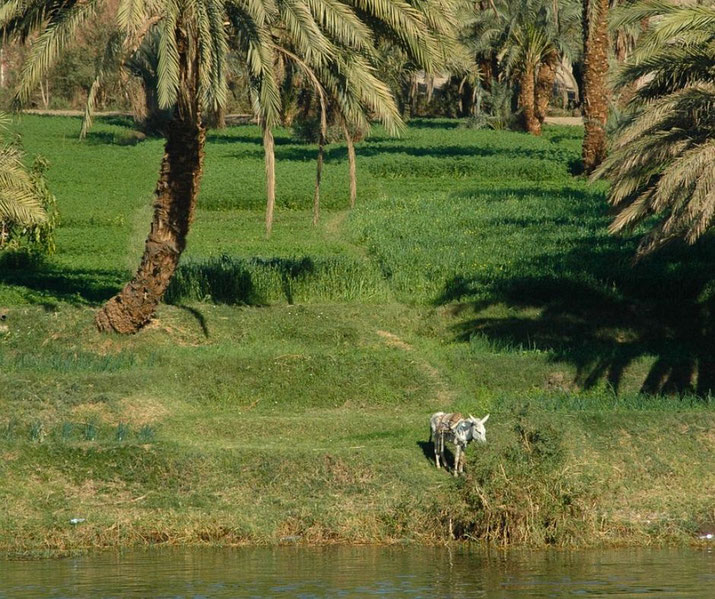The most remarkable inventions, creations, and ideas from Ancient Egypt

From the impressive pyramids to the detailed system of hieroglyphic writing, the inventions of ancient Egypt are truly remarkable.
Much to the surprise of modern people, the ancient Egyptians were master builders, skilled physicians, capable administrators, and sharp observers of the heavens.
Here are the most important and significant inventions of them all:
1. Hieroglyphs
Hieroglyphs were a system of writing using detailed pictorial symbols that were the cornerstone of Egyptian written culture.
They enabled the documentation of historical events, religious texts, and administrative records.
As far as archaeologists can determine, the earliest hieroglyphic writing dates back to around 3200 BC in the era known as the Predynastic Period.
The oldest existing hieroglyphs were simple pictograms, which stood for objects or concepts.
Over time, they evolved into a sophisticated system of over 700 symbols.
Each symbol could represent a single sound, a complete idea, or identify an object.
When combined, they expressed very complicated thoughts and stories.
Not until the discovery of the Rosetta Stone in 1799 were scholars able to decipher this ancient script.
Interestingly, hieroglyphic writing was both a practical form of communication and a strangely sacred function.
It was considered a way of preserving forever the words of the pharaohs and the gods.
Men who knew how to read and write were called ‘scribes’ in Egyptian society.
To attain this knowledge, scribes underwent strict training in the temples.
Here, they learned how the state recorded laws, maintained administrative records, and produced religious texts.
In fact, hieroglyphs inspired the development of other writing systems, including the Phoenician alphabet, which in turn laid the foundation for Greek and Latin scripts.
Today, the echoes of the ancient Egyptian scribes can be seen every time we put pen to paper or type on a keyboard.

2. Papyrus paper
Papyrus, a material similar to thick paper, was made from the pith of the papyrus plant.
This plant was a reed that grew abundantly along the banks of the Nile.
The process of making papyrus was labor-intensive.
First, the plant was harvested, and the pith was cut into thin strips.
Next, these strips were soaked, flattened, and layered in a crisscross pattern.
The layers were then pressed and dried to form a smooth, long-lasting writing surface.
It appears that papyrus was invented around 3000 BC, not long after the first hieroglyphs.
It quickly became recognized as a great discovery because it was lighter, more portable, and easier to produce in large quantities than clay tablets or animal skins.
As a result, it became the ideal medium for almost every writing need.
As papyrus production grew, Egypt exported it across the Mediterranean, and it became the primary writing material in ancient Greece and Rome.
3. Writing ink
Alongside the development of papyrus, the ancient Egyptians also created ink.
To achieve this, they used a mixture of soot or other natural materials for color, combined with a binder, such as gum arabic, and water.
The resulting ink proved long-lasting and resistant to smudging.
As a result, it became ideal for writing on papyrus.
Although the Egyptians developed a range of colors, black and red were the most commonly used.
Most often, black ink was used for the main body of text, and red was chosen for headings, notes, or emphasis.
When used in combination with papyrus, ink helped the administration of the Egyptian state.
It also played a key role in preserving Egyptian culture, as many papyri have survived to this day.

4. Advanced mathematics
The Egyptian numeral system was base 10 and similar to the modern system.
Because it was not positional, placing a symbol in a different location did not change its value.
They used hieroglyphs to represent numbers, with separate signs for 1, 10, 100, 1,000, and more.
The system was simple and effective, which mean that Egyptians could perform calculations and solve many mathematical problems.
The ancient Egyptians also excelled at geometry. The annual flooding of the Nile, which was essential for agriculture, washed away boundary markers between fields, requiring the development of geometric methods to reestablish these borders.
In practical terms, Egyptian mathematics created procedures to calculate areas of fields, volumes of grain storage bins, and pyramid slopes.
The most famous record of their detailed numeral system is the Rhind Mathematical Papyrus, which dates from around 1650 BCE.
It contains problems relating to fractions, algebra, geometry, and perhaps even trigonometry.
It includes an approximation of π, which shows that the Egyptians had a foundational idea of this complex mathematical constant.
According to the papyrus, Egyptians employed a system called seked to describe a pyramid’s slope, which is similar to the trigonometric tangent concept.
Their mathematical and geometric knowledge was crucial when building large structures such as pyramids and obelisks.
5. Ground-breaking medicine and surgery
Ancient Egypt led the ancient world in medical innovation because its practitioners possessed advanced knowledge of anatomy, disease, treatment, and surgical procedures.
Dating from around 1600 BCE, the Edwin Smith Papyrus is one of the most important Egyptian medical texts and it provides detailed descriptions of surgical techniques, treatments for various illnesses, and a basic understanding of organ systems.
More famously, Imhotep, the architect of the Step Pyramid of Djoser (c. 2667 to 2648 BCE), was also a physician.
His medical knowledge became famous in later Egyptian and Greek history.
Interestingly, Egyptian medicine recognised mental health. Evidence of this appears in the Ebers Papyrus, another surviving text from around 1550 BCE.
It lists over 700 medical treatments and herbal cures and mentions depression and dementia.
What is more, Egyptian surgeons performed procedures such as wound stitching, bone setting, and trepanation, which involved drilling a hole in the skull.
They did this by using a variety of surgical instruments that closely resembled modern tools.
Also, Egypt established one of the first professional classes of physicians, who underwent rigorous training and specialised in fields such as dentistry, ophthalmology, and gastroenterology.
Later, Egyptian medical writings were translated into Greek and Arabic, spreadiang their medical knowledge across the Mediterranean and Middle East.
These other civilizations improved and expanded upon many Egyptian medical concepts.

6. The most accurate calendar of the era
The Egyptian solar calendar was divided into twelve months, each made up of thirty days, with an extra five days added at the end of the year to make up for the difference between the lunar and solar cycles.
As a result, the total number of days amounted to 365, which was more accurate than many other calendars at the time.
The Egyptians knew that this system was not perfect; it was about a quarter of a day shorter than the actual solar year.
However, it was not until much later that leap years were added to fix this difference.
Regardless, the calendar was closely tied to the Egyptians’ religious beliefs and farming work.
Because of this, the year was split into three seasons, each linked to the Nile’s cycle: Akhet, which was the flood season; Peret, which was the growing season; and Shemu, which was the harvest season.
Clearly, these seasons helped the Egyptians plan their farming activities.
The Egyptian calendar also included a way to track the moon’s phases. The lunar calendar ran concurrently with the solar calendar, with each month starting at the new moon.
The civil solar calendar was used for government business, whereas the lunar calendar served more for religious ceremonies.
This dual system allowed the Egyptians to match their religious rituals with both the solar and lunar cycles.
Later, a version of the Egyptian calendar was adopted by the Romans and became the Julian calendar.
It was improved into the Gregorian calendar that we use today. Therefore, every time we check the date or plan ahead, we use a system that has its roots in ancient Egypt.
7. The pyramids
The pyramids were built as tombs for the pharaohs and were amazing engineering projects that required careful planning, organisation, and labour.
The largest of these structures, the Great Pyramid of Giza, was made from over two million stone blocks weighing about 2.3 tonnes each.
It originally stood at 146.6 metres tall, making it the tallest man-made building in the world for over 3,800 years, with a base covering 5.3 hectares.
Despite its great size and complexity, builders achieved incredible accuracy; its base was aligned to within less than one percent of error.
However, scholars still debate how the Egyptians built it, considering they did not have iron tools or wheeled vehicles.
Today, experts believe they used simple machines such as levers and ramps, along with a large workforce and detailed planning, to complete these huge structures.

8. Complex temples and underground tombs
In addition to the pyramids, the ancient Egyptians built many other structures. The Temple of Karnak, for example, is a vast complex of sanctuaries, gateways, and obelisks dedicated to the gods of Thebes and to honour Egypt’s pharaohs.
Its size and design show the effort the ancient Egyptians invested in their religious buildings, and many pharaohs expanded it over almost two millennia.
The style of Egyptian architecture influenced many later cultures, from the Greeks and Romans to the Renaissance and beyond.
The use of columns, the focus on balance and proportion, and the combination of architecture with art and religion were all ideas that later societies copied and adapted.
9. Vast irrigation systems
The Nile River, with its yearly flooding, provided a natural way to water fields by leaving behind rich silt.
To grow more food and support a growing population, the Egyptians needed to control and spread the Nile’s water more effectively.
Various irrigation methods and tools were created, including canals, dams, storage pools, and devices such as the shaduf and the nilometer.
The shaduf was a simple but effective tool used to lift water from the Nile or its canals to the fields.
It was made of a long pole with a bucket on one end and a weight on the other, making it easier for farmers to water their crops.
Another device, known as the nilometer , was used to measure the Nile’s water level during the annual flood.
This information proved very important for estimating how much food the fields would produce and for planning in case of possible famines.
The Egyptians also built a network of canals and dams to direct water to their fields.
During the flood season, water was allowed to flow into the fields to deposit a layer of fertile silt and was then drained into storage pools or back into the river, ready for planting.
Irrigation systems like these turned Egypt into one of the ancient world’s main grain producers, growing extra crops such as wheat and barley.
This surplus of food supported millions of people, helped trade with nearby regions, and allowed Egyptian civilisation to grow.

10. A massive state bureaucracy
The ancient Egyptians were among the first civilisations to develop a centralised government.
This centralisation arose from the need to manage resources, organise large projects, and maintain order in a society that was growing more complex.
The Egyptian government was known for its strong central control, with the Pharaoh at the top.
In this system, the Pharaoh was a religious figure who was seen as a living god.
Such divine status gave the Pharaoh total power, helping to keep the government stable and united.
Below the Pharaoh was an extensive group of officials who ran the government. It was divided into different departments, each in charge of matters such as farming, taxes, building projects, and law enforcement.
The people overseeing these departments were usually nobles trained in the temples and loyal to the Pharaoh.
This large and detailed system allowed the Egyptians to carry out its major construction projects, including building the pyramids and creating the irrigation systems mentioned above.
What do you need help with?
Download ready-to-use digital learning resources
Copyright © History Skills 2014-2025.
Contact via email
With the exception of links to external sites, some historical sources and extracts from specific publications, all content on this website is copyrighted by History Skills. This content may not be copied, republished or redistributed without written permission from the website creator. Please use the Contact page to obtain relevant permission.





